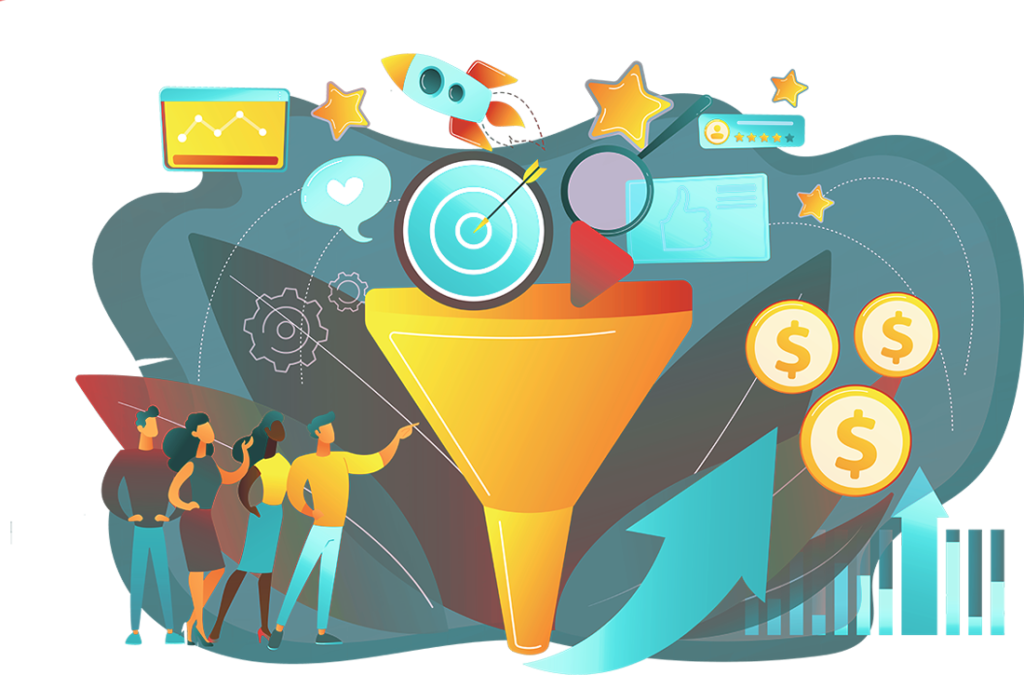 A marketing funnel can become a key to increasing leads. The main question is how to create a powerful LinkedIn funnel to convert potential customers into real ones?
A marketing funnel can become a key to increasing leads. The main question is how to create a powerful LinkedIn funnel to convert potential customers into real ones?
What is a marketing funnel?
Let’s start with defining the marketing funnel itself. A funnel is a roadmap that guides the potential customer from his first interaction with a brand towards becoming an actual customer.
For better understanding, here are the examples of possible marketing funnels:
- Blog Post > Email List > Conversion
- Facebook Ad > Blog Post > Conversion
- LinkedIn Ad > Landing Page > Conversion
Simply put, a person interacts with your content for the first time, such as seeing the advertisement or finding the blog post. Next, he moves to the next step, exploring the landing page. There he takes action by calling you, completing the registration form, or making the purchase right away.
LinkedIn is one of the greatest platforms for building effective funnels and generating leads, especially in the B2B sector.
Let’s review some tips to build powerful LinkedIn marketing funnels.
How does the funnel work?
To understand the idea of the marketing funnel, you need to look at it from the customer perspective. Funnel goes through several stages:
The first stage — is problem recognition. Potential customers understand the problem and need and start finding a solution at this stage. Here it is essential to understand your target audience to use the proper tools to reach out to them.
At the second stage, people are looking for information to learn more about the solution. During this step of the funnel, you need to provide valuable data to interest the user and convince him that your product is worthy of attention.
The third stage is for considering alternatives. Most likely, people will evaluate other similar services to compare and decide which is better, especially if the solution requires significant investments.
Make sure to analyze competitor products and show the customer that your brand is better.
And the last stage — purchase decision. At this point, the customer is ready to decide and buy what you offer. Allow doing it conveniently and easily, of possible provide online ordering system, or have consultants who will be able to answer any clients questions.
Tips to creating better LinkedIn sales funnels
Here is what you need to do to get your messages to read and answered and generate leads via LinkedIn funnels.
LinkedIn was initially created for business purposes. Everybody on the platform is either looking for a job or hiring or promoting their businesses. So every time looking through the feed, users are already open to receiving information related to business. That is exactly why LinkedIn is the best for generating B2B leads.
Now back to the funnel. We divided funnel creation into three key steps:
Create a strategy and plan before you send the actual message
On this message depends the first impression and further communication development. An important task is to define the right tone and deliver the right idea to the potential customer.
Plan out what you want to say, create a pre-message and follow-up actions. These are supposed to warm up your leads and engage them in communication.
Don’t take it literally and don’t create different messages template. You should rather concentrate on the message strategy: the tone of the message, follow-up activities.
Test your message strategy
You can’t know for sure how the funnel will perform itself. So once you created a 1-3 message strategies template, test them and evaluate the results.
Start sending them out to your LinkedIn leads and see how they respond.
Track messages and use conversion system
To understand how the message was received and how the strategy works you need to track message conversions. Only this way you can understand whether the funnel is working. Focus on data and form the right direction of what should be changed or not in the funnel for its better performance.
LinkedIn is great as it allows to engage its many options and include them into sales funnel: groups, direct messages, connections degrees, content feed, ads.
To build even more powerful funnels, use LinkedHelper. This tool was created to expand the functionality of LinkedIn and turn it into a robust marketing instrument.
With LinkedHelper you can build automated funnels. You can set up a sequence of actions from visiting the account to inviting it to a group or creating a sequence of messages, where the tool will automatically identify replies and let you choose whether to continue communication manually or run the funnel.
In lead generation strategies, funnels are an effective tool. And LinkedIn here gives you a variety of options: you can use the platform as a part of a bigger funnel or build a separate one within the social network.




